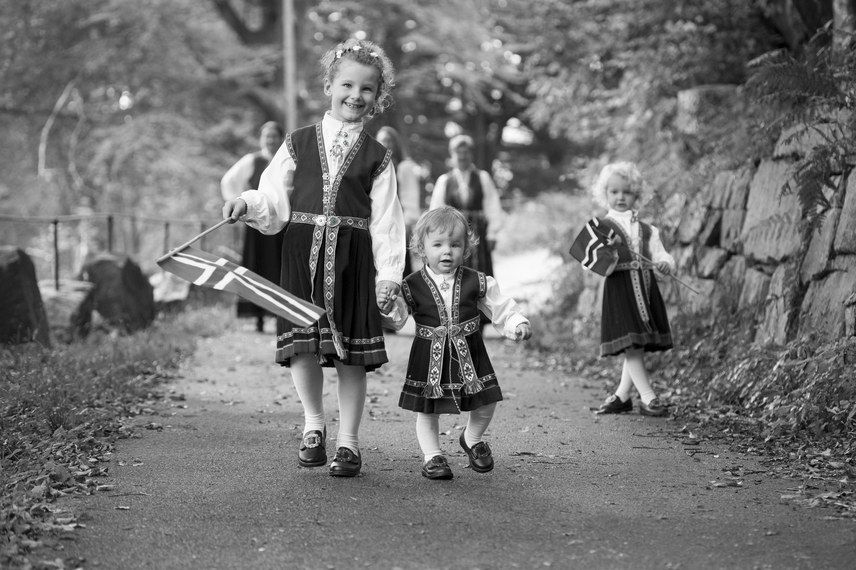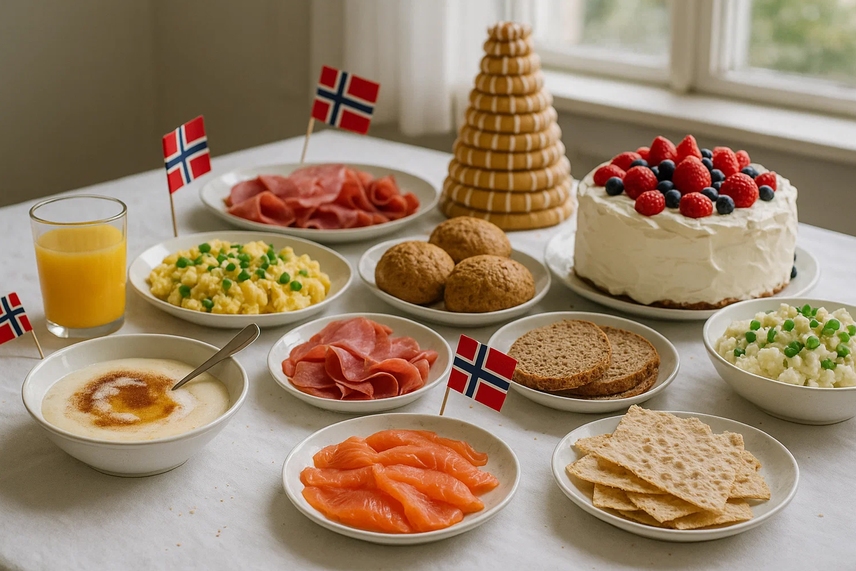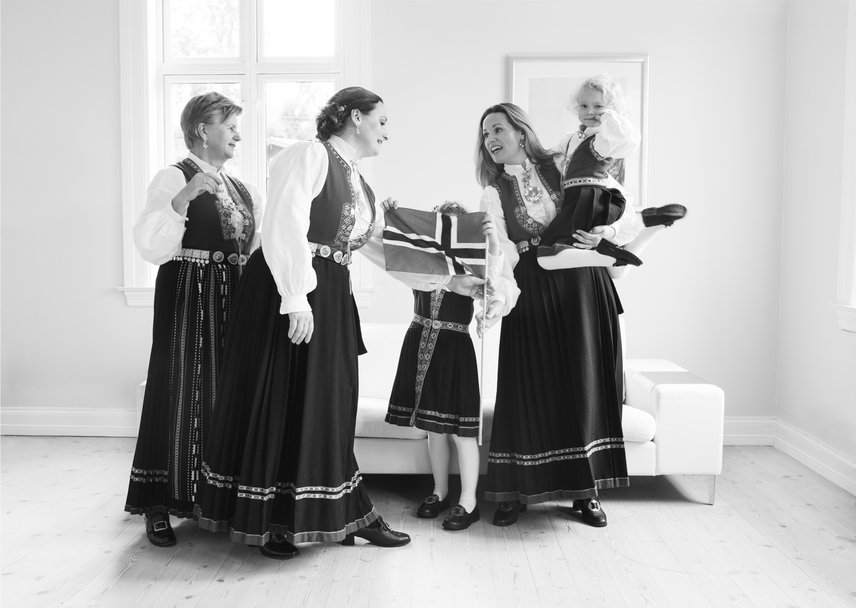
10 Unique Norwegian Traditions That Make Syttende Mai So Special
If you have Norwegian roots, you may know that May 17th—or Syttende Mai—is more than just a date. It marks the signing of Norway’s constitution in 1814, and a national celebration of freedom, pride, and identity that unites Norwegians around the world.
But what exactly happens in Norway on this day?
Here are 10 festive traditions—some you might want to adopt, wherever you are.
-
Marching in the Children’s Parade (barnetog)
From kindergarten through elementary and middle school all across Norway, children march through towns waving flags. Each school has its own cheer or chant, proudly shouted as they pass cheering crowds. In Oslo, the parade passes the Royal Palace, where the royal family greets the crowds from the balcony.
-
Dressing Up in a Bunad
They're full of history and craftsmanship, often handed down from generation to generation – and they mean a lot. For many, a bunad is a proud symbol of identity and belonging.


-
Decorating with Flags and Birch Branches
Streets and homes are dressed up with Norwegian flags, birch branches, and decorations in red, white, and blue. Young and old alike wear the national colors, with 17th of May ribbons proudly pinned to their chests. And wherever there’s a flagpole, you can be sure the Norwegian flag is flying high.
-
Starting the Day with a 17th of May Breakfast
The day often begins with family and friends gathered over a traditional breakfast with scrambled eggs, cured ham, smoked salmon, and fresh bread. Of course, the morning can also come with a bit of chaos, especially if you're trying to get the whole family into their bunads and out the door in time for the children's parade.
-
Eating All the Ice Cream and Hot Dogs You Want
Enjoyed in massive amounts! It’s the one day a year when kids are allowed to eat as much ice cream and as many hot dogs as they want—and they definitely do!
-
Celebrating with Marching Bands
Marching bands lead the crowd in singing the national anthem, Ja, vi elsker dette landet, and set the tone for the celebration with festive tunes. In Bergen, neighborhood youth brigades called Buekorps—marching drummers in uniform—carry on a tradition found nowhere else in Norway.
-
Digging In to the Traditional Cold Buffet
A traditional cold buffet is often enjoyed at family gatherings during the day. The table might include rømmegrøt (sour cream porridge), cured meats, scrambled eggs, potato salad, flatbread, and festive cakes like kransekake and bløtkake (whipped cream cake).

-
Playing Nostalgic 17th of May Games
After the parades, schools and local communities host nostalgic games like sack races, tug-of-war, potato relays, and the tin can toss—simple childhood favorites that have been part of the Syttende Mai celebration for generations. And just like the rest of the day, there’s usually no shortage of ice cream, hot dogs, and cakes.
-
Spotting the Russ and Collecting Their Cards
High school seniors in Norway are called Russ, and May 17th is the grand finale of weeks of loud celebration marking the end of 13 years of school. Dressed in solid-colored overalls, they’re hard to miss as they play a lively part in the day’s festivities. Kids love spotting the Russ and collecting as many russekort as they can—quirky calling cards with a photo of the Russ and a funny slogan.

Celebrate Your Way
May 17th is all about joy, togetherness, and being proud of where you come from—and seeing just how many ice creams you can eat.
However you choose to celebrate, we hope your National Day is filled with that special feeling of being part of something truly Norwegian.
Gratulerer med dagen and happy 17th of May!
P.S.
Did you know that Norway’s Constitution is the world’s second oldest written constitution still in use today—after the United States?